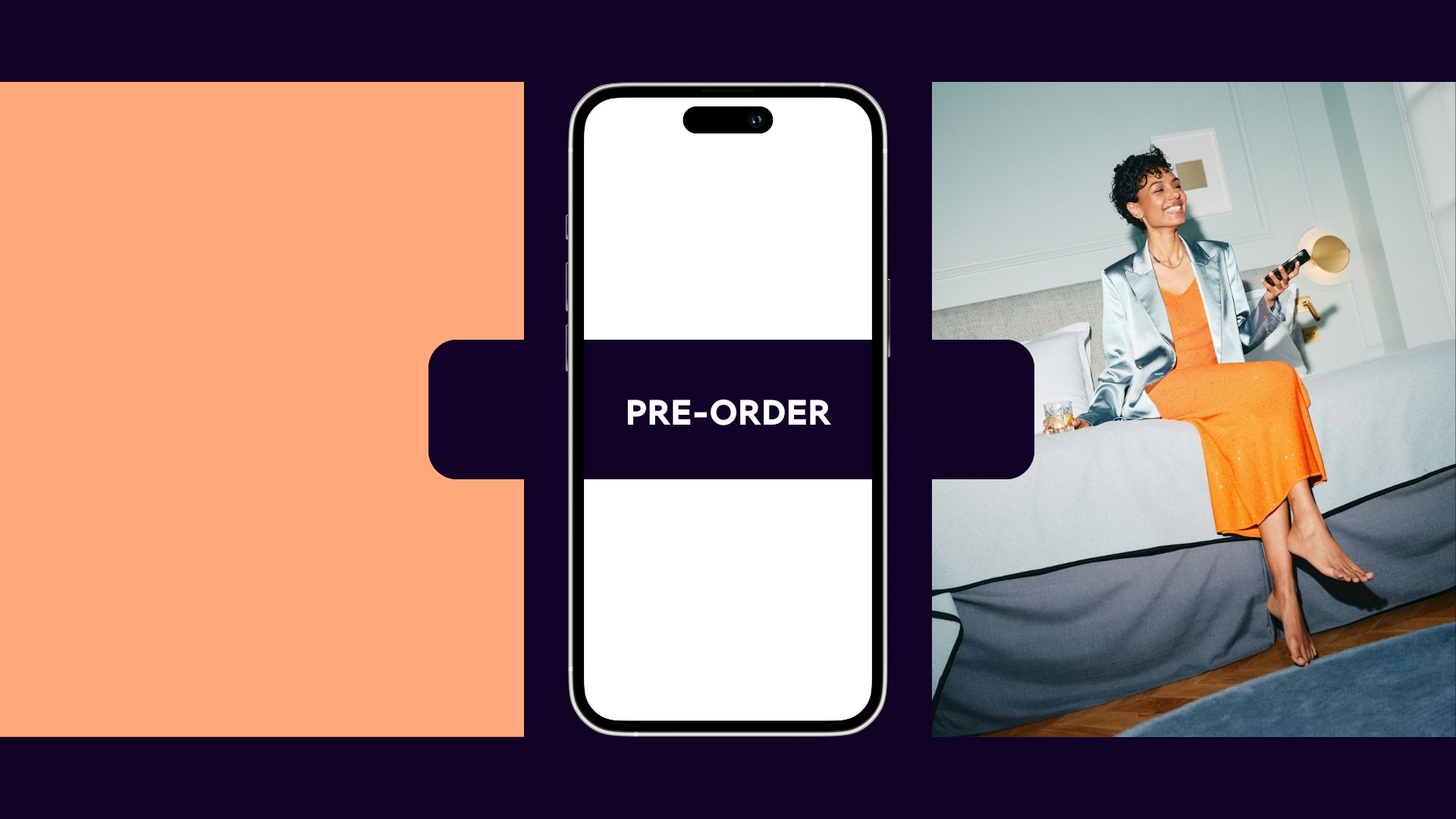What Is Pre-Commerce?
.jpg)
No matter the brand, no matter the vertical, there’s a universal truth for retailers: Unsold inventory sucks. And it’s everywhere. McKinsey estimates that in the U.S. alone, retailers are sitting on $740 billion in unsold inventory.
Purple Dot was founded with the mission that everything that gets made gets sold. Traditionally, brands haven’t been able to sell stock until it was physically in the warehouse. Pre-commerce is the practice of using pre-orders to sell products before they’ve arrived. Now, they just need the stock to ship. Pre-commerce empowers them to sell at any time.
When brands embrace pre-orders, they can sell earlier. They’re then able to sell longer. The longer they can sell, the more they will sell.
How pre-commerce protects against supply chain snafus
The eCommerce calendar has traditionally been driven by predictable consumer patterns. Because people shop more during Black Friday, for example, production timelines and inventory management strategies often reflect that.
Consumer patterns may be predictable, but the supply chain is not. Look no further than how the recent tariffs have impacted the retail industry.
Say a brand is working on a new product launch. They’ve been marketing it for months. Everything is on track… until it’s not. At the last minute, they learn that some of their products will arrive late. Consequences can snowball. A warehouse meltdown is likely, which would only exacerbate the delay.
By launching late, the brand will miss demand. Missed demand leads to unsold inventory. Some products will eventually be marked down, hurting the brand’s margins. Others will contribute to the $740 billion of unsold inventory that may end up wasting away in a landfill.
Worse, it erodes trust with customers. Though the missed launch wasn’t the brand’s fault, the customer doesn’t care. TCN Inc.’s annual consumer insights survey found that 73% of shoppers will abandon a brand after a single bad experience.
That scenario plays out all the time. Pre-commerce ensures it doesn’t have to.
Pre-commerce centers on what we call “the presell period.” That can be when inventory is en route to the warehouse. It can also be a year from now. Customers don’t mind waiting for their order, provided brands manage expectations with clear communication. Our data shows no correlation between the length of wait time and a brand’s page-to-buy conversion.
Pre-commerce gives brands unprecedented control over their retail calendars. Now say the brand put the products from their launch on pre-order. Capitalizing on the presell period, they would have been able to sell well before that inventory arrived and even during the delay. The result? Less unsold inventory and happy customers.
How the presell period benefits brands
Retailers typically demand forecast based on historical data, such as sales from the previous year. Because that doesn’t account for things like shifting trends or economic factors, historical data is only 65 to 75% accurate. That’s another factor contributing to the volume of unsold inventory.
The presell period gives brands valuable data about not what they expect to sell, but what is actually selling. Pre-commerce allows brands to better forecast demand — and convert it.
When trendy sneaker brand LØCI tested pre-orders versus “Notify me” for their out-of-stock styles, the pre-order approach led to an 89% increase in sales. That’s because the brand didn’t have to wait for the restock to arrive to convert demand, providing protection from any supply chain issues.
LØCI’s results with pre-commerce were awesome, if not atypical. Pre-orders outperform Notify Me lists by more than 10x. With pre-commerce, brands can strike while the iron is hot. Notify Me lists aren’t designed to drive sales; they’re built to recover lost sales. If a shopper receives a back in stock notification, they may have lost interest.
Notice the word “if.” Many times, the items aren’t restocked. Any item being restocked should be on pre-order because the customer can purchase it with certainty.
Going out of stock also hurts a brand’s bottom line even more than overstock. Every year, out of stocks cost retailers $1.2 trillion: nearly triple the industry’s unsold inventory. That’s not even factoring in how much money brands lose in the long run when customers turn to competitors and their whole lifetime value goes up in smoke.
Pre-commerce as the future of eCommerce
There’s only so much brands can do to further optimize the eCommerce experience, which has come such a long way from the early days of Amazon and eBay. We’re calling it: The next 10 years of innovation in eCommerce will instead center on pre-commerce.
We’ve already seen tremendous growth from the early days of Purple Dot. Over the past free years, Purple Dot’s share of gross merchandise value — meaning, what percentage of the brand’s sales are attributed to pre-orders — has increased massively.
Why wouldn’t it? Our data shows that pre-orders add 6 to 8% of annual revenue for top performing brands, while cutting excess inventory by 50%.
Without pre-commerce, just think about how much more unsold inventory brands would be sitting on. If you’re interested in reducing your unsold inventory — and delighting your customers — reach out to sales@getpurpledot.com.
More insights

Ditch Your DIY Pre-Order Setup: How Purple Dot Makes Setting Up and Managing Your Pre-Order Process Simple and Scalable

